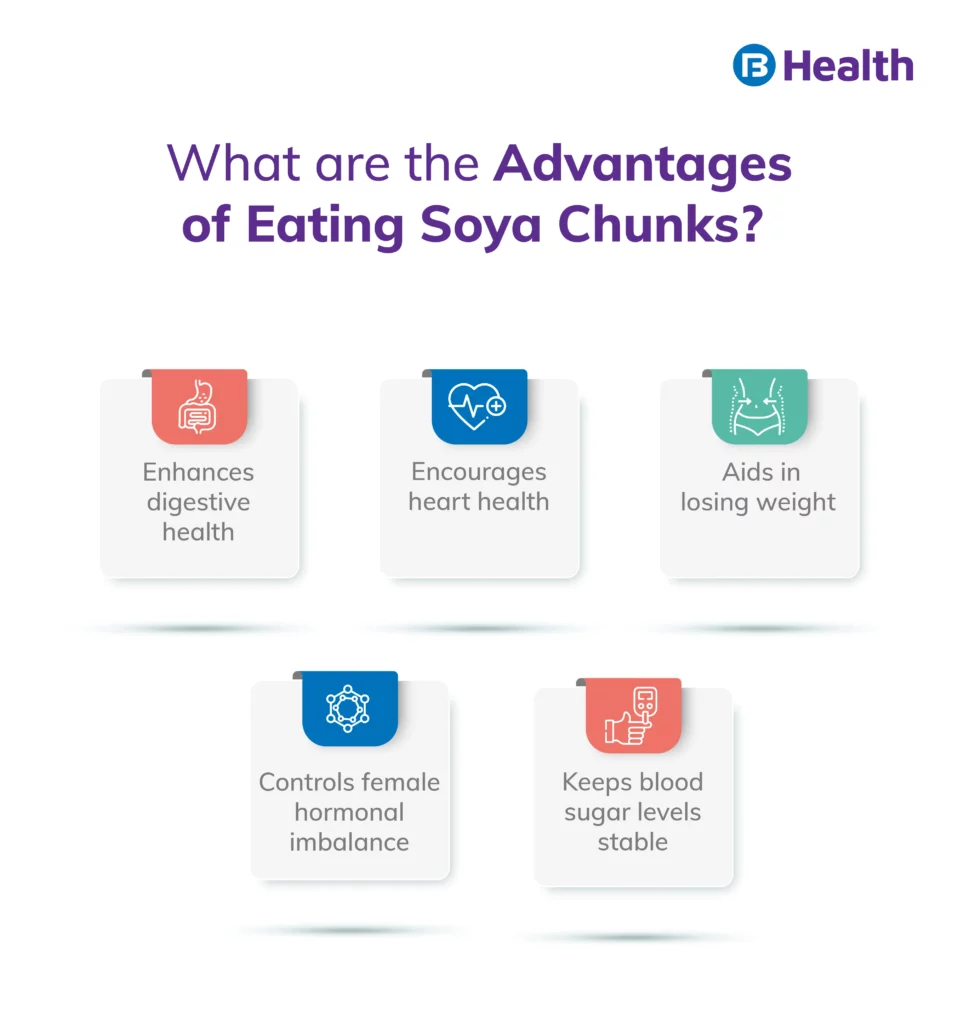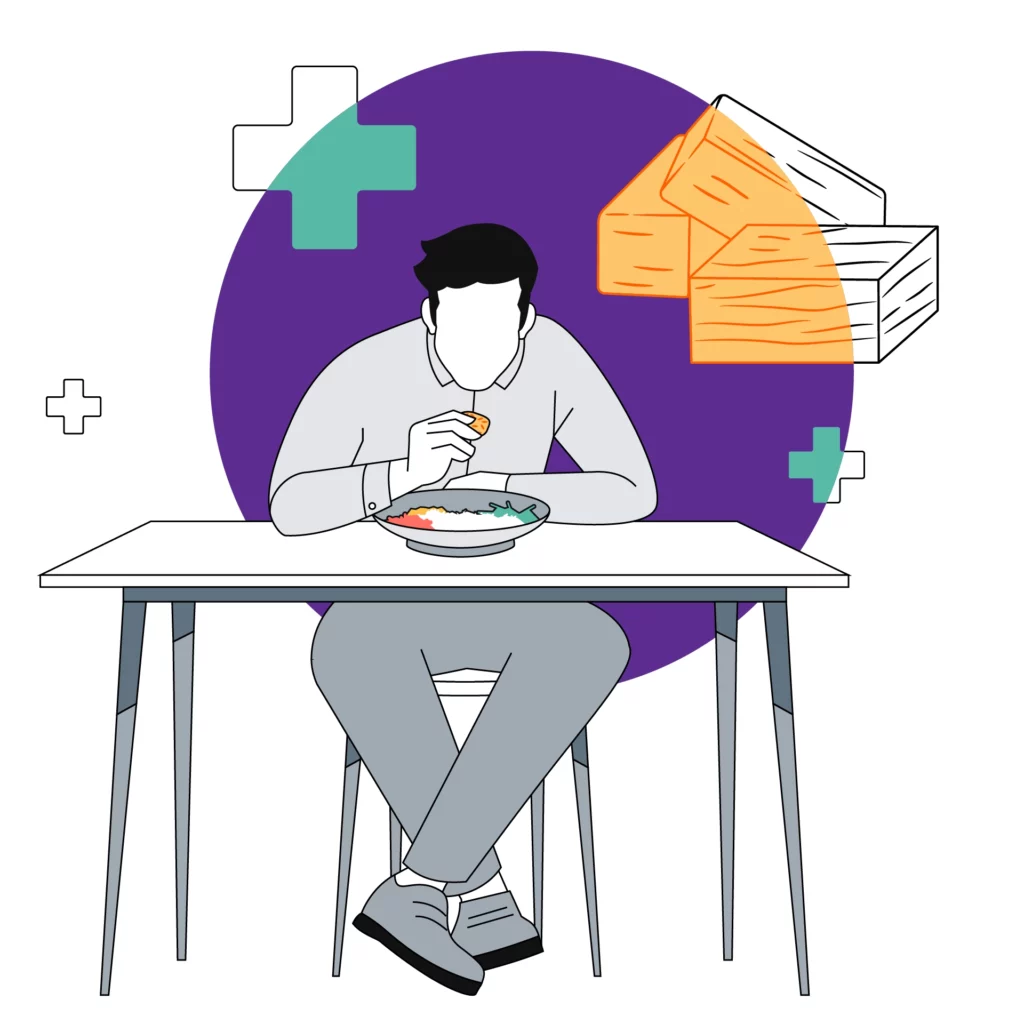Soya Chunks: Benefits, Uses, Side Effects and Precautions
Synopsis
Soya chunks, commonly called vegetarian meat, are prepared by separating soybean oil from soy flour. They are rich in protein, fibre, and iron, and make an excellent meat substitute but have certain negative health effects if consumed excessively.
Key Takeaways
- The high protein content of soya chunks makes them beneficial for those facing protein deficiency in their diet
- Soya Chunks are heart friendly food as they help in prevention of heart diseases
- Soya Chunks are a treat for those who are health conscious and are loaded with Omega 3
Soya chunks are quite popular, especially among people who are health-conscious because of their high protein content. The soybean plant is used to produce soya chunks. Because of its protein content, density, and texture that resembles meat, soya has emerged as one of the most contentious foods today. As their nutritional profile is similar to a number of non-vegetarian meals, they are referred to as "vegetarian meat." Due to their high protein, fiber, and iron levels, soya chunks are great for your health.
Nutritional Facts of Soya Chunks
Soya chunks are a high-nutritional food and one of the best dietary products if your body is low in protein. Due to financial constraints, many customers who prefer less expensive protein sources like chicken or eggs over protein supplements regard soya chunks as a great substitute.
Additional Read: Protein Rich FoodsThe following are the soya chunk's nutritional value of a 100-gram package:
- 52 grams of protein. Protein is abundant in soya chunks. When compared to chicken and eggs, they have higher protein. As a result, they fulfill the daily protein recommendations for both men and women
- 13.0 grams of fiber
- 345 kcal in calories. Although soya chunks contain a lot of calories per 100 grams, they must be consumed in moderation
- 33 grams of carbohydrates
- 50 grams of fats. Comparing soya chunks to chicken and eggs, you can see that they have a lot less fat
- 350 milligrams of calcium. Soya chunks have a substantial amount of calcium since they make up around 35% of the necessary daily amount

Benefits of Soya Chunks
The following are some soya chunks benefits:Enhances Digestive Health
Soya chunks benefits digestive health and have been used in cuisine for ages. Because they are high in fibre and low in fat, they have been proven beneficial for digestive health. Protein and other nutrients that might aid in digestion also are present. Eating soya chunks regularly increases the number of lactobacilli and bifidobacteria in the intestines. [1] Both of these microbes support digestion.
Encourages Heart Health
Omega-3 fatty acids, fibre, and protein are all abundant in soya chunks. According to a study, soya chunks are heart-healthy food because they reduce cholesterol levels in the body and treat a number of heart conditions with good cholesterol. [2]
Soya Chunks Benefits for Weight Loss
After consuming soya chunks, you won't have frequent hunger cravings since they provide lasting satiety. Also, it includes a protein derived from plants called texturised vegetable protein (TVP) that has qualities for lowering body fat and weight. [3] Compared to carbs, soya chunk digestion takes more energy from your body. In turn, this promotes weight reduction and fat burning.
Controls Female Hormonal Imbalance
Isoflavones, a kind of phytoestrogen, are found naturally in soya chunks. According to research, they lower the risk of heart disease, osteoporosis, and breast cancer which is a great benefit of soya chunks for females. It is a product made from fermented soy that contains isoflavones, which are natural substances that resemble estrogen.
Women who experience PMS and menopausal symptoms, such as hot flashes, night sweats, and vaginal dryness, may find soya chunks helpful in regulating hormonal imbalance. [4] Moreover, postmenopausal women and those with PCOS get the most from this. Because of their high protein content, soya chunks are a key component of the 7 Day PCOS Diet Plan for PCOS patients.
Lower Blood Sugar
The isoflavones lower blood sugar levels in soya chunks. Thus, diabetics should incorporate them into their usual diet. By regulating blood sugar levels, they help lessen the chance of developing cardiac illnesses. [5]
Potential Use of Soya Chunks
A Fantastic Meat Replacement
Around 50 grams of protein are included in 100 grams of soya chunks. They provide a high amount of protein compared to the same amount of chicken or lamb meat. Due to their high protein content, they are regarded as an excellent meat alternative, especially for vegans.
How to Use?
Soya chunks are a versatile and nutritious food that can be used in a variety of ways, such as:
- Soak and Cook: Soya chunks are usually sold in a dehydrated form and must be rehydrated before cooking. Soak them in warm water for 10-15 minutes until soft, then cook them as desired
- Curry or Gravy: Soya chunks are popular in curries and gravies. Add soaked and cooked soya chunks to your favourite curry or gravy recipe for a protein boost
- Stir-Fry: Soya chunks can also be added to stir-fries. Simply soak and cook them, then stir-fry them with vegetables and spices for a quick and easy meal
- Salads: Add cooked and cooled soya chunks to your salads for an extra protein boost
- Snacks: Soya chunks can also be used to make snacks like cutlets, patties, or kebabs
Side Effects of Soya Chunks
Even though soya is highly good for general health, unrestricted intake can lead to various health issues. You should be aware of Soya chunk side effects if you plan to add them to your regular diet.
- Kidney disease: Phytoestrogens are abundant in soya chunks. If consumed in excess, these chemicals might harm the kidneys
- Digestive problems: Constipation, flatulence, and stomach aches are all symptoms of overeating. Hence, it's advisable to consume them in moderation
- Stones in the kidneys: Unrestricted consumption of these tasty legumes might increase the risk of kidney stone development. That is due to the high uric acid content of soya chunks. Kidney stones may develop due to the body's high uric acid levels depositing in the kidney. As a result, they must be consumed in moderation
- Male hormone problems: Women should consume soya chunks because they contain phytoestrogens, which are excellent for balancing their hormones. Yet a male may experience hormonal problems if he consumes soya chunks in large quantities. According to certain research, eating more soya chunks may cause hormonal imbalance by lowering testosterone levels and raising estrogen levels in males [6]. These soya chunks may also cause uric acid levels to rise, resulting in health problems, becoming a major soya chunk side effect in males
Precautions For Using Soya Chunks
Although soya chunks have great nutritional value, overeating them could raise your body's uric acid and estrogen levels. This causes liver damage, water retention, mood changes, weight gain, acne, bloating, and joint discomfort. To prevent these problems and reap the greatest advantages from soya chunks, health experts advise consuming only 25–30 grams daily. Consult a general physician to make sure soya chunks are suitable for you.

A Must-Try Recipes
To get started, try this tasty and savoury soya chunks recipe:
Soybean curry
Ingredients
- 1 cup soya chunks
- 3 cups of cold water
- 1 pinch salt
For curry
- 3 tablespoons of any vegetable oil or soy oil
- 1/2 teaspoon mustard seeds
- 12 teaspoons cumin seeds
- 1 tablespoon of onions, finely chopped
- 1/2 cup finely chopped tomatoes
- 1 teaspoon of ready-made ginger-garlic paste
- 1/4 teaspoon of turmeric powder
- 1 teaspoon Kashmiri red chilli
- 1 teaspoon garam masala
- 1 tablespoon of chopped coriander leaves
Grinding ingredients
- 1 cup of tomatoes
- 3–4 tablespoons of coconut milk
Recipe
- Heat 3 cups of water until it is at a full boil
- Dip the soya chunks
- After softening, the soaked soya chunks must be drained of excess water
- In a pan, heat the oil
- Add cumin and mustard seeds. Curry leaves are then added. Add the Kashmiri mirch and turmeric powder after allowing it to sputter
- Add the onions and cook them till golden brown
- Add ginger and garlic paste, and then wait until the raw flavour has disappeared
- Include the chopped tomatoes. In the pan, mash them once they are soft
- Include coconut milk. Wait for 5 minutes
- It should now be included. Over medium heat, saute everything
- Add 2 cups of warm water. Combine everything. Await the thickening of the curry
- Add some garam masala
- Add coriander leaves as a garnish
While using chunks, it's important to keep in mind that they have a mild flavour and tend to absorb the flavours of the dish they are cooked in. Therefore, using them with bold spices and flavorful sauces is recommended.
Additional Read: Calcium Deficiency SymptomsWhether you are looking for a meat alternative or want to add more protein to your diet, soya chunks are a nutritious and delicious option worth considering. But before introducing soya chunks or anything new to your diet, get a doctor consultation from a nutritionist or health expert on Bajaj Finserv Health to ensure it aligns with your needs.
- https://www.ncbi.nlm.nih.gov/pmc/articles/PMC4303825/
- https://www.ncbi.nlm.nih.gov/pmc/articles/PMC5188409/
- https://www.ncbi.nlm.nih.gov/pmc/articles/PMC9689165/
- https://www.ncbi.nlm.nih.gov/pmc/articles/PMC2570347/
- https://www.ncbi.nlm.nih.gov/pmc/articles/PMC2981010/
- https://www.ncbi.nlm.nih.gov/pmc/articles/PMC1480510/
Please note that this article is solely meant for informational purposes and Bajaj Finserv Health Limited (“BFHL”) does not shoulder any responsibility of the views/advice/information expressed/given by the writer/reviewer/originator. This article should not be considered as a substitute for any medical advice, diagnosis or treatment. Always consult with your trusted physician/qualified healthcare professional to evaluate your medical condition. The above article has been reviewed by a qualified doctor and BFHL is not responsible for any damages for any information or services provided by any third party.



